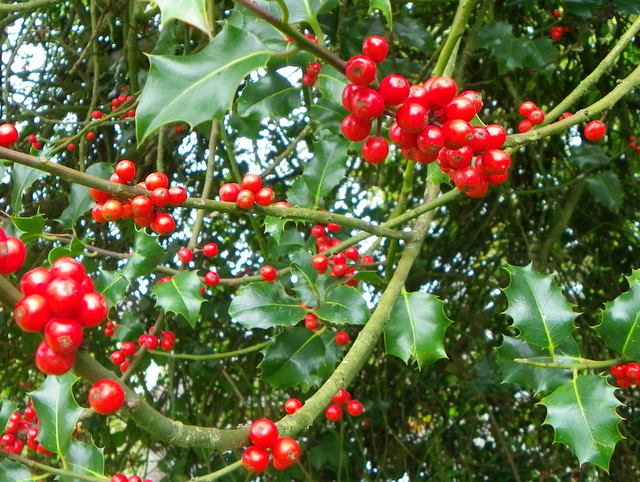Holly (Ilex aquifolium), St Aldhelm's Church
Introduction
The photograph on this page of Holly (Ilex aquifolium), St Aldhelm's Church by Maigheach-gheal as part of the Geograph project.
The Geograph project started in 2005 with the aim of publishing, organising and preserving representative images for every square kilometre of Great Britain, Ireland and the Isle of Man.
There are currently over 7.5m images from over 14,400 individuals and you can help contribute to the project by visiting https://www.geograph.org.uk

Image: © Maigheach-gheal Taken: 28 Oct 2010
The Holly is one of Britain’s few native evergreen trees, and it has adapted in curious way to live as an undershrub in woods throughout the British Isles. Its leaves are thick, with waxy surfaces, to enable them to resist water loss when the soil is frozen in winter. This explains why holly does not wither when it is hung on walls as a Christmas decoration. As it is the only broad-leaved tree with foliage available in winter, holly could suffer server harm from browsing deer. But it is protected by sharp spines on the lower foliage, although higher up, where the deer cannot reach, the leaves are spineless. Holly trees are either males or female; both bear pretty, white, waxy flowers in May. These have four petals and nectar to attract bees. The female flowers develop into berries containing four seeds, which ripen by October, although in some years no berries appear. As winter grows harder, birds especially thrushes, wood pigeons and starlings, strip the trees, swallowing the fruit. The small hard seeds are passed in the birds’ droppings, so spreading the tree. The seedling starts life with two soft deciduous seed leaves, which are followed by the normal evergreen foliage. Larger trees up to 40 ft tall live for 80 years. Their bark is smooth and grey, and the hard white wood – sometimes used for carving – burns brightly even when freshly felled. The green foliage is also inflammable. Legends link holly’s blood-red berries and spiky leaves with Christ’s crucifixion and crown of thorns, which reinforces its use in church decoration. But it is probably that holly was used as a form of decoration in pre-Christian times. Even without religious associations, holly would naturally have been used to brighten people’s houses in the leafless and flowerless depths of winter.

